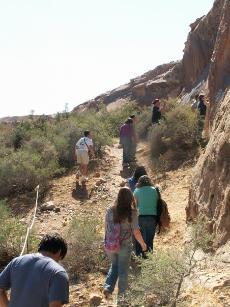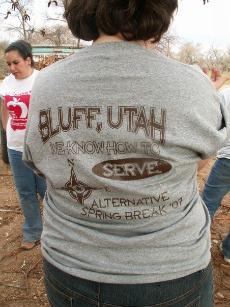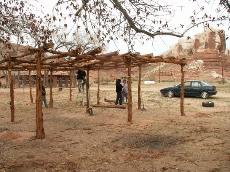By Christina Martin and Tejal Patel
As students return to campus from spring breaks on sunny beaches or at home with families, one group of students will tell tales of building houses and working with children thousands of miles from campus.
As part of the second annual Alternative Spring Break, sponsored by the Campus Catholic Parish and the Office of Student Activities, 11 students visited Bluff, Utah to spend their spring break volunteering on a Navajo Reservation.
The students left the last day before spring break and flew from LaGuardia Airport to Albuquerque, N.M. They then drove five hours to Bluff where they stayed in a recreation center.
“I wanted to do something interesting and new on my spring break and that’s why I went,” sophomore psychology major, Emilio Iturrino, said. “I’m a big believer in helping people.”
According to Katie McEvoy, a campus minister from the Campus Catholic Parish, the Navajo site was chosen because the parish felt there to be a great need to serve an everyday poverty, which they found to be present in the Navajo culture.
The Navajo people are currently the largest Native American tribe in America. The reservation encompasses over 16 million acres of the Four Corners region of Arizona, Utah and New Mexico. The term Navajo, meaning “the people of many cultivated fields,” also refers to the language spoken by the people.
“It was interesting to see how different it was there,” said junior Megan Ciccarello. “You’re in the United States, but there were people there who didn’t even speak English.”
During the trip, the students built a Shade House, a traditional Navajo meeting place used in the summer for reunions. The houses are built with cedar logs and covered with leaves, which trap shade in the hot desert area.
Students also had the opportunity to sit in on a Navajo class in an elementary school, where children are learning the Navajo language. The students then read to preschoolers and kindergartners living on the reservation.
“You don’t realize that there’s a culture like this in the United States, because we’ve kind of forgotten them…it’s really isolated and the people don’t have much,” Ciccarello said. “They’re really just kind of existing.”
The final activity the students participated in included painting rooms in the houses of two elderly Navajo people.
“I think it was a very positive experience,” Iturrino said. “I was able to see another part of the country, and I got to learn about a new culture, a new religion that I didn’t know about.”
McEvoy agreed that Bluff was nothing like what she has seen on the East Coast. “Words and pictures barely begin to describe how wonderful the area is.”



